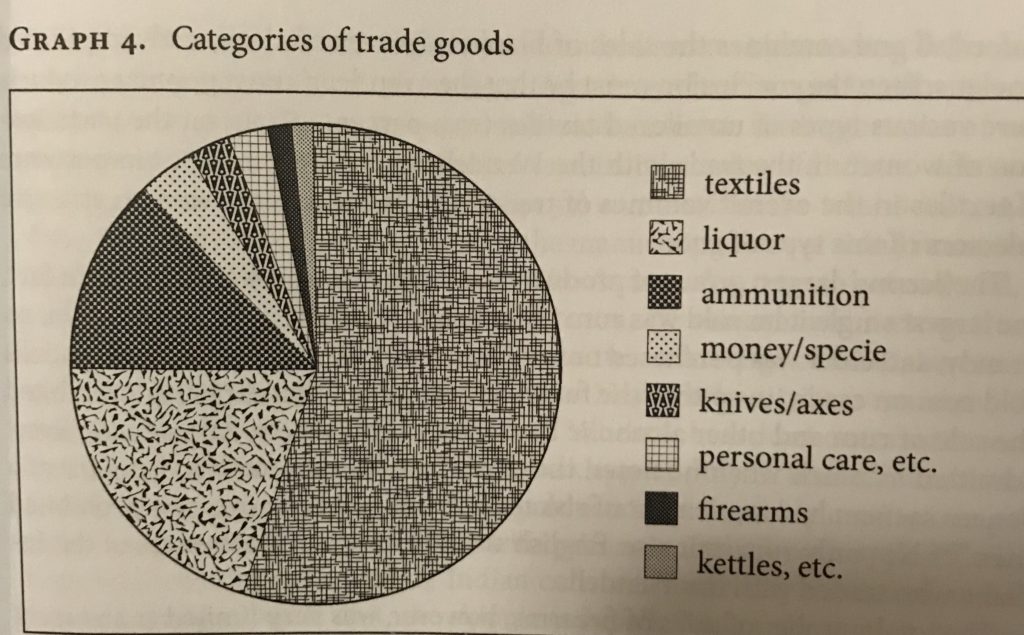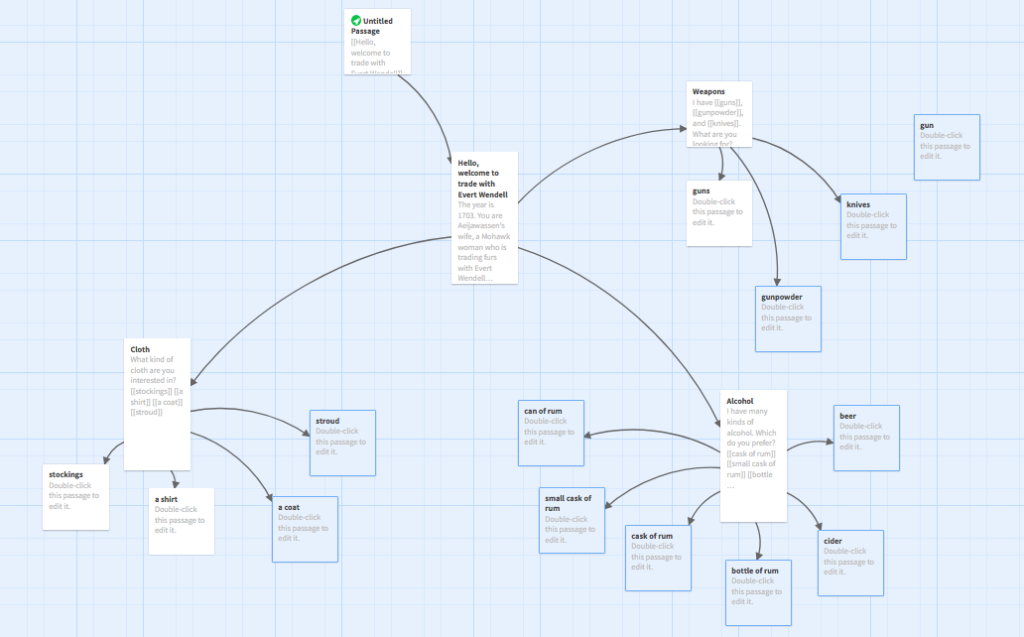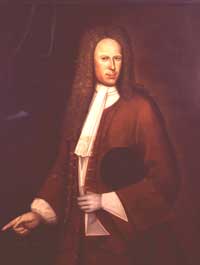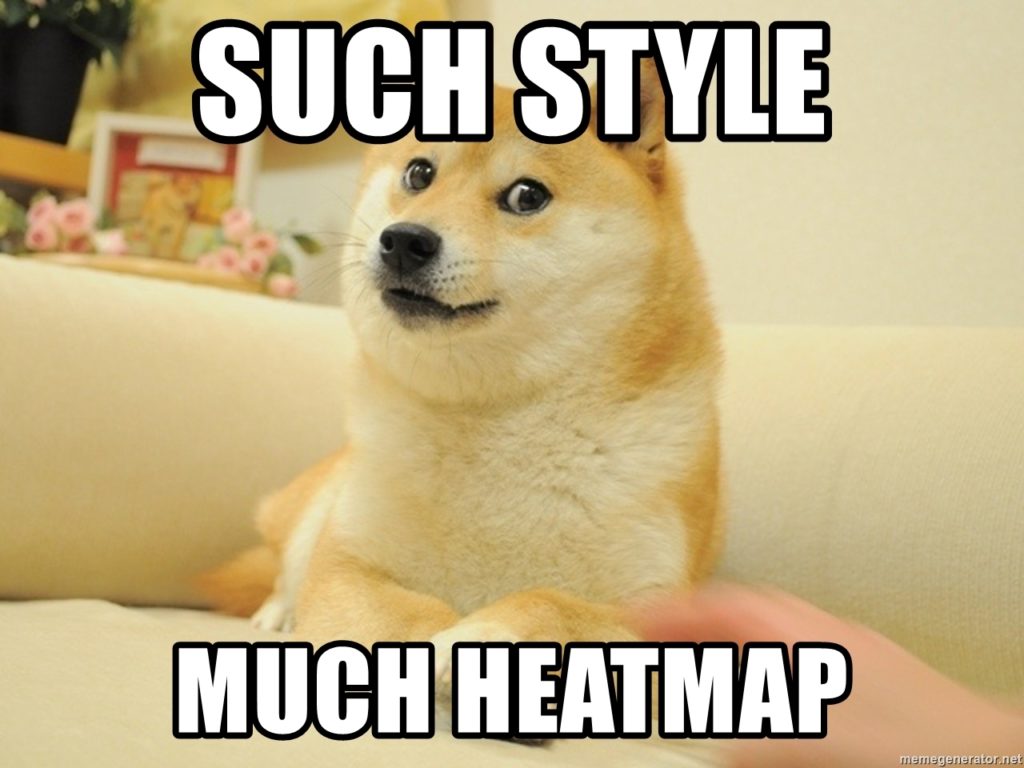-
Adventures in the Fur Trade
The term Fur Trade is inherently Eurocentric as it only refers to what Europeans were trading for and what Europeans needed. In the 1600s and 1700s, Europeans traded cloth, rum, and weapons for furs which they sent back to Europe to make hats and other clothing. Looking at this from a Native American perspective, trade was varied vital to survival.
The Fur Trade was an important part of United States history and is crucial to understanding European/Native American relations in Early America. By teaching it as the Fur Trade and neglecting the Native American perspective, we remain entrenched in denying Native American presence and autonomy in our history.
-
Adventures in the Fur Trade
*I apologize for providing you all with the roughest of drafts. It’s been a hectic few weeks so I haven’t gotten much work done on this project*
Why Do We Call it the Fur Trade?
I asked a group of college educated (though not in history) students what was traded in the fur trade, I had two main responses. The first, “fur”. The answer was simple, to the point, and did not require much thought. The other response I received more than once was “I don’t know but when you tell me I’ll feel stupid for not knowing.” Once response that stuck out was, “They were trading humans for fur”. These answers presented me two questions, “why do we call it the fur trade?” and “how can we improve basic understanding of such an important time in the continent’s history?”
The Fur Trade began in the 1500s, coinciding with both the “discovery” of America as well as a growing market for fur hats in Europe. It’s dedication as “The Fur Trade” soon followed. Records from early explorers, such as Samuel de Champlain’s The Foundation of Quebec, 1608, refer to the business as the Fur Trade. However this term is, in some ways, a misnomer. As can be seen with the students from earlier, there is a lack of understanding of what the fur trade was past what its title reveals. In actuality, for Native American traders, the fur trade was about much more than fur. It involved cloth, alcohol, weaponry, and food. By some historians accounts, trade became a method of survival.
(I will add more information here about statistics, prevalence of the trade, and the use of Evert Wendell’s account book as a primary source document.)

Chart pulled from Kees-Jan Waterman’s “To Do Justice to Him & Myself” I will recreate this in a digital format and use it in my project to describe the varying degrees of importance of certain trade items. Creating another name for the fur trade would be arduous, and most likely unsuccessful, however, that does not mean that the current state of discussing the trade should be kept. Interactive learning can bridge this gap between the realities of history and how it is taught. Through use of an interactive timeline and a Choose-Your-Own-Adventure Twine game, I hope to increase awareness of the purpose of the fur trade for European and Native American participants alike.
(The game is in its early stages, as I am still figuring out how to work Twine. I am open to all suggestions regarding making gameplay fun/easier to work.)
-
Wireframe: Evert Wendell
My project will have three main components featured on a dashboard: introductory essay (where the argument is made), a timeline to supplement the text, and a Twine story that will bring the trade to life.
The first will be a brief introductory essay regarding the trade of alcohol and furs between traders and Native Americans in early America, specifically looking at Albany, New York. I’m still unsure of an argument but I’m working on it.
The second part will be a time line that traces major changes like laws that influenced the trade of alcohol, reasoning for the cost fluctuation, and the life of Evert Wendell (who lies at the heart of the project). The timeline will span further than Wendell’s trade book dates to give the reader more background (mid-1600s to mid-1700s). I would like to have short paragraphs written to explain the relevance of each major event. In addition, these events will be reflected in the essay portion.
Finally, the project will have an interactive Twine story. Readers will be able to “live” the life of a person who traded with Evert Wendell. They will choose from three different people, all selected from Wendell’s trade books. The twine story will begin as the person begins the trip to Albany. This section will include maps that detail the trek a person might have to take, travel times, and surprise decisions that the trader has to make. They will reach Albany with a certain amount of pelts (based off locations and numbers reflected in the data) which will determine what they buy. I have not figured out the logistics of this part but I want it to remain interesting, fun, and a big part of the story. Unlike the previous sections, this part will deal mainly with Wendell’s trade books as well as its translation. The “game” will end with a short bit about what the person may have done with whatever they bought. I see the twine story looking somewhat like the Oregon Trail game. Probably with less dysentery though.

The Beginning of Twine -
Final Project: The Evert Wendell Files

Evert Wendell: The Man with No Eyebrows Data Critique
The Evert Wendell account book data details the “fur” trade between Wendell and Canadians/Native Americans. The dates range from the late 1690s to the early 18th century. Trade ranges from Canadians to people in the Catskill region in lower New York. This includes a variety of Native Americans such as the Seneca and Mohawk. It cannot describe the trade other than the details written down in Wendell’s account book. Those features, when translated into the spreadsheet, are as follows: name, male, female, gender, tribe, affiliation, date, trade good, fur, town, and the amount of fur/guilders received. This particular dataset includes about 1600 entries. Many of the names given are offered in relation to another person (i.e. mother of D’caiendanharij). This dataset was taken from Wendell’s account books and translated into a spreadsheet by Dr. Kane. It is divided for clarity, including three rows regarding gender. If this were my only source, I would lack the context of the trade itself that a secondary source could provide. Additionally, I might be lost on the geographic location of the trade, who Evert Wendell was, or what a marten was.
-
Networks
The network grows as more years are introduced. However, this also means that the web of people becomes more difficult to read. Luckily, the years are separated into colors which means it is slightly easier to pick out connections. Interestingly, many years start a new sub-group of people and most do not have connections to the years prior. I consider these groups the outliers as they are not present on the graph when it’s zoomed in. This leads to a conclusion that new people must either be coming to town or joining the congregation each year, regardless of if they know someone. The biggest nodes on the map belong to John Wemp and Mary Butler, who are also connected. I do not necessarily understand why this is but both have many connections on the map from various years and those connections make more connections as well.
-
Heat Maps and Dendrograms

There’s a weird amount of heatmap memes on the Internet Heat Maps
A heat map is a way to visualize data that is reliant on color variation. All heat maps require a legend to show what each color means. It can show labeled categorical data or qualitative data so long as it corresponds with a color. While some he maps may have specific colors, others can cover a range. This kind of heat map works best with quantitative, continuous data that allows for a range of possibilities, such as temperature.
-
Review: The Welikia Project
Beyond Mannahatta: The Welikia Project. https://welikia.org/. Created by Phillip Pond and maintained by the Mannahatta Project staff at the Wildlife Conservation Society, https://welikia.org/credits/. Reviewed February 3, 2019.
Welikia is Lenape for “my good home”, referring to the island of Mannahatta (Manhattan/Land of Many Hills). It is the center of Eric Sanderson’s project to remap Manhattan and reconnect it to its ecological roots. Reimaging the flora and fauna, recreating farms and habitations, he Welikia Project website aims to break down Sanderson’s project into easily understood, yet wholly fascinating parts.
-
Review: The Normal School Company & Normal School Company History
The Normal School Company & Normal School Company History. .https://www.albany.edu/faculty/aballard/civilwar/index.html. Created by Professor Allen Ballard’s graduate seminar. Reviewed February 3, 2019.
Normal School Company introduces the story of the Company E of the 44th NY, comprised of students, faculty, and alumni of the Albany Normal School. The website has several links, detailing the history of the Normal School, the men of the company, the battles they fought, and the various cemeteries that became the final resting place for the men who fought.